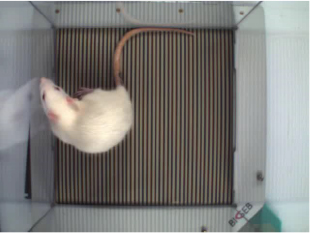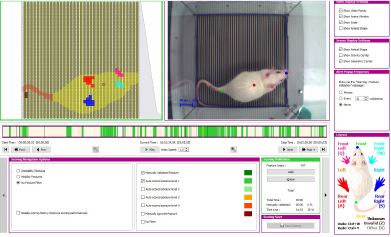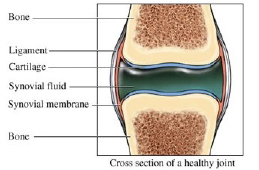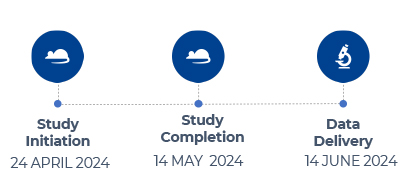CHARLES RIVER LABORATORIES – RAT STUDY
Effects of Telomir-1 in the Monosodium-Iodoacetate (MIA)-induced Osteoarthritis (OA) Joint Pain Model in the Aged Rat
- Adult Spague Dawley rats at 7-9 months old will be used for the study.
- Osteoarthritis will be induced by intra-articular injection of MIA (Mono-iodoacetate) in the knee joint on Day 0.
- Dosing of Telomir-1 by oral gavage will be performedfrom Day 3 to Day 14.
- Dynamic Weight Bearing (DWB) will be assessed at different time points (Day 4, 7, 10, and 14) for evaluationof joint nociception.

- Bioseb’s DWB allows researchers to work with freely moving animals in a transparent cage with a matrix of sensors embedded in the floor of the enclosure. The animal is free to move as it pleases.
- The animal is filmed from above for a duration of approximately 5 minutes.

- The video feed is analyzed in real-time during the test using tracking software which allows precise analysis of the animal’s posture.
- The weight bearing on each paw is measured via the sensors embedded in the mat.
- The difference between amount of weight bearing on the MIA injected leg versus the non-injected leg will be calculated to assess the effect of Telomir-1 on joint pain.
Teminal Endpoints
- Joint synovial fluid will be collected for imflamatory cytokine measurement.

- Whole blood will be collected for Telomer length asessment.

Timeline

ARGENTA – MIDWEST VETERINARY SERVICES, INC. – DOG STUDY
Determining the efficacy of Telomir-1 on Mitigating the Clinical Signs of Osteoarthritis using a Femoral Induction Model in Laboratory Beagle Dogs
- Primary objective: Evaluate the efficacy of Telomir-1 for mitigating the progression of osteoarthritis based on symptomatic, radiographic, gross pathologic and histopathologic evaluations and age reversal
- Secondary objective: Demonstrate the safety of Telomir-1 when administered daily for 168 consecutive days
- Induction of osteoarthritis using femoral model
- Start of in-life phase Q2 2024 End of Live Phase (necropsy) Q4 2024
- Acclimation (SD -7 to -1); Induction Phase (SD 0 to 27); Treatment Phase (SD 56 to 196); Necropsy SD 197
- Physical examinations, gait analysis measurements (video camera), digital radiology, and hematology will occur every 4 weeks throughout the treatment phase for all 12 dogs.
- Necropsy (SD 197)
-
-
- Femur and tibia will be separated, and the articular surfaces photographed for macroscopic cartilage damage scoring.
- Histologic changes in the articular cartilage will be evaluated
- Hematology, clinical chemistry, IL-17, and telomere length will be evaluated
-
-
Study Conclusions
- The data confirmed our hypothesis that TELOMIR-1 affects telomere length, promoting its extension in primary cell strains including MRC-5, HUVEC, and MSCs (~40% increase).
- TELOMIR-1 was observed to cause cell cytotoxicity at a concentration of 500 µM in both MRC-5 and HUVEC cells.
- Despite cell loss exacerbated by the ethanol vehicle, TELOMIR-1 was effective in extending telomere length in MSC cells.
- The cytotoxic effect of 500 µM TELOMIR-1 in treated cultures was apoptotic, demonstrated by an increase in active Caspase-3 expression (less necrotic cell death, less inflammatory response, more recycled cell constituents).
- Data confirmed our hypothesis that TELOMIR-1 increases telomerase activity by 40%.

